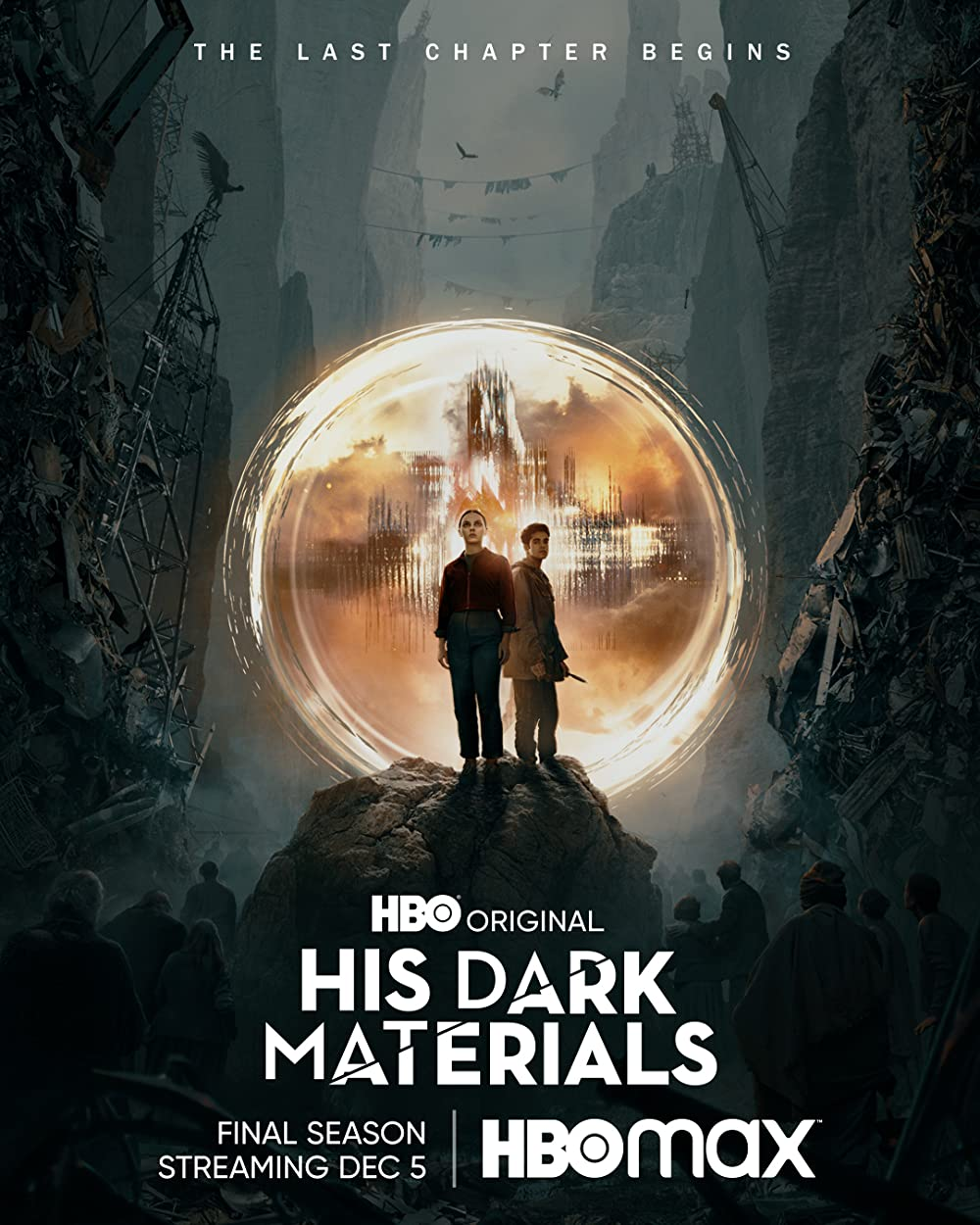Language and Contexts
Thursday 25 May 2023
Doctor Who: Language and Representation blog tasks
Language and Contexts
Wednesday 10 May 2023
Introduction to TV drama: Blog Tasks
1) The 'His Dark Materials' trailer meets the conventions of a TV drama series through the use of dramatic narrative, or narrative arc, which is when a specific story or plot line goes across the entire series. It also consists of an ensemble cast, meaning a range of different characters each with their own unique story lines or backstories. There are a variety of technical codes displayed throughout the trailer, including realistic lighting, different settings, point of view shots, dialogue voice overs, enigma and action codes throughout. Additionally, there are a number of stereotypical 'stock' characters which help to get story lines across quickly.
2) The genres that are suggested by the 'His Dark Materials' trailer include fantasy, as it seems to be set in an eerie and dystopian world filled with sinister characters including somewhat supernatural beings. It could also be perceived as a mystery, for there are many scenes portrayed in the trailer which have a mystifying and unnatural tone revolving around it; this means that it could also be classified as a 'hybrid genre'.
3) The trailer for 'His Dark Materials' introduces a young girl named Lyra, who lives in a world where people's souls exist outside their bodies as animals called daemons. The trailer also shows the mysterious organisation called the Magisterium, and a parallel universe filled with danger and adventure. The narratives revolve around Lyra's journey to uncover the truth about her world and her own identity, whilst navigating the dangers of the Magisterium and other uncanny forces.
4) The trailer conveys a variety of different settings in which the show takes place in, including a somewhat remote-looking island in the vast ocean, forests, fortresses, cathedrals, city streets, prisons and cavernous places. Each one of these settings connote to a typical dystopian genre, what with the gloomy and peculiar effect they give off. This may be in order to emphasise the supernatural nature of the series, and to link back to the ongoing 'other-worldly' theme which is highlighted throughout the entirety of the trailer.
5) I think that the target audience for 'His Dark Materials' is primarily teenagers, young adults and adults. This is due to the complex themes the series convey, such as religions, politics and morality. They also feature much darker and mature content than that of many other supernatural fantasy series. As well as this, the books are well-known for their intricate world-building and sophisticated storytelling, which may appeal to older readers who enjoy immersive and captivating fantasy novels.
Grade 8/9 Extension Tasks:
1) The reviewer believes that there are clear distinctions between the series and the books, including the use of smartphones in the series (which was not in the books), they also seem out of place in a what's meant to be supernatural alternate reality. Similar things were said revolving around the inaccurate representation of characters and plots which did not stay true to the book trilogy. They also comment upon the music composer's choice to use a melodic tune during a dramatic and captivating scene, which they quote to be a 'shame', given the fact that they believe the two lead stars, Dafne Keen and Amir Wilson as Lyra and Will, are such good actors that they would be better off without that specific choice of music which was used in an attempt to convey dramatic tension. There are mostly similar opinions in the comments left by readers, with many stating that it's 'an excellent first episode' and plead for another season to release, as they were left impressed by the acting, production, design, CGI, wardrobe, photography and soundscape with another reader describing it to be a 'perfect escapist TV for the times'.
Thursday 4 May 2023
Wednesday 3 May 2023
Arctic Monkeys - I Bet You Look Good On The Dancefloor: Blog Tasks
Audience
- 0:09 - this is the beginning of a long and catchy electric guitar riff which captivates the audience and almost immediately draws their complete attention on to the music video and the song in itself.
- 0:53 - this is the start of the first chorus which then repeats later on in the songs. This may appeal to audiences as it is one of the main parts of the song given the fact that there was a shift in tone and because of the repetitiveness, it also includes the title of the song in the lyrics.
- 1:17 - the long shot clearly portrays all four band members and their positions; such as the lead guitarist or the drummer.
Videogames: Kim Kardashian
Language: 1) The objective of the Kim Kardashian: Hollywood game is to create your own star, with the ability to customise your look and ou...

-
Language and close-textual analysis 1) Camerawork, editing and sound : The opening non-diegetic sound is epic, orchestral music which sets t...
-
Language and Contexts 1) Camerawork and sound : 0:00 - 06:25 - the opening theme tune to Doctor Who is very sci-fi, which sets the genre f...
-
1) 2) 3) In the 1950s/1960s adverts, women are portrayed to be cleaning, cooking or looking after their husband and/or family. This supports...





